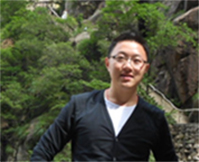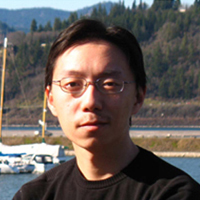This research was chosen as one of 13 highlights in the field of electronic and magnetic materials in APS Science 2017: Research and Engineering Highlights from The Advanced Photon Source at Argonne National Laboratory.
Quantum Frontiers
Layer by layer, UT physicists are exploring the frontiers of tuning material properties down to the atomic level. Experimenting with the stacking pattern of superlattices, they investigated inter- and intra-layer dynamics to learn more about magnetism on the nanoscale, with potential connections to high-temperature superconductivity and spintronics.
Controlling a material’s properties starts with understanding its structure. The crystal lattice of a material has atoms arranged in an orderly, repetitive pattern. A superlattice comprises two or more of these materials. In work published in Physical Review Letters, the UT group explained their investigations on superlattices composed of strontium, iridium, and oxygen (SrIrO3) and strontium, titanium, and oxygen (SrTiO3). The two constituents belong to the perovskite family, materials of particular interest in physics and materials science because they exhibit properties like magnetoresistance and superconductivity.

Lin Hao
In this case, scientists used a pulsed laser to deposit single layers of SrTiO3 atoms between layers of SrIrO3 atoms (or, in shorthand, STO and SIO), effectively turning the three-dimensional SIO lattice into atomically thin slices sandwiched by STO. They varied the distance between the SIO layers, separating them by one, two, or three STO layers. They found that the further apart the SIO layers were, the more independent, in a sense, they had to be. The additional STO layers interspacing them prevented the interaction of electrons between the SIO layers, or as Postdoc Lin Hao explained, the “SrTiO3 will block electron hopping between neighboring SrIrO3 layers because the band of the former is (much) higher than the latter.”
Assistant Professor Jian Liu put it this way: “If they’re talking to each other, it masks their behavior. If you separate them, they have to behave individually.”

Jian Liu
That behavior showed that magnetism in these superlattices could be attributed to exchange coupling within the SIO layers (intra-layer), though with some delicate influence from their declining interaction with each other (inter-layer). Spin, like charge, is an intrinsic property of electrons; orbit is an electron’s path. Exchange coupling is the way two magnetic atoms (or ions) in a material interact with each other.
In this research, physicists also realized a two-dimensional (2D) antiferromagnet at finite temperatures with diminishing interlayer exchange coupling. “By accurately controlling the stacking pattern during a superlattice growth, we can tailor macroscopic properties as well as magnetic structure,” Hao said.
As Liu explained, in principle there is no magnetism in a 2D system. In most magnets, he said, you have a north and a south. But if you have a disc, you have infinite configurations, which means the system isn’t stable. To have an internal structure that designates the north and south gives you that stability.
The results indicate that the blocking layer may play a critical role in the physical properties of the confined two-dimensional (2D) perovskite layers. With the 2004 discovery of graphene, interest in 2D materials—crystalline materials only one atom thick—has grown. As the PRL paper points out, understanding magnetism in 2D materials is essential for further developments in quantum magnetism, as it’s been proposed that doping 2D samples could lead to superconductivity.
Further, the research tells scientists more about the square lattice of IrO6 octahedra, which Hao explained “provide a completely new playground for studying most of the frontier questions in condensed matter physics,” owing to similarities with lattice structures giving rise to high-temperature superconductor phases.
Hao was lead author on the paper, titled “Two-Dimensional Jeff =1/2 Antiferromagnetic Insulator Unraveled from Interlayer Exchange Coupling in Artificial Perovskite Iridate Superlattices.” Along with Liu, other UT authors are Physics Graduate Students Clayton Frederick, Junyi Yang, and Nathan Traynor. Other co-authors are D. Meyers, Gilberto Fabbris, and M.P.M. Dean (all of Brookhaven National Lab); Lukas Horak and Dominik Krieger (Charles University, Czech Republic/Institute of Physics, Academy of Sciences of the Czech Republic); Yongseong Choi, Jong-Woo Kim, and Phil J. Ryan (Argonne National Laboratory/Dublin City University, Ireland).
The paper is online at https://link.aps.org/doi/10.1103/PhysRevLett.119.027204.